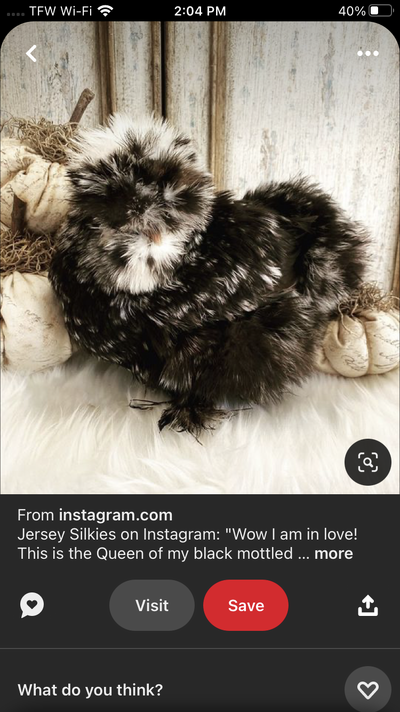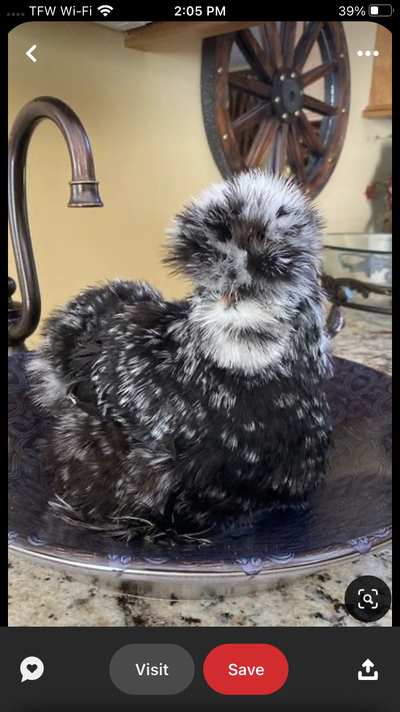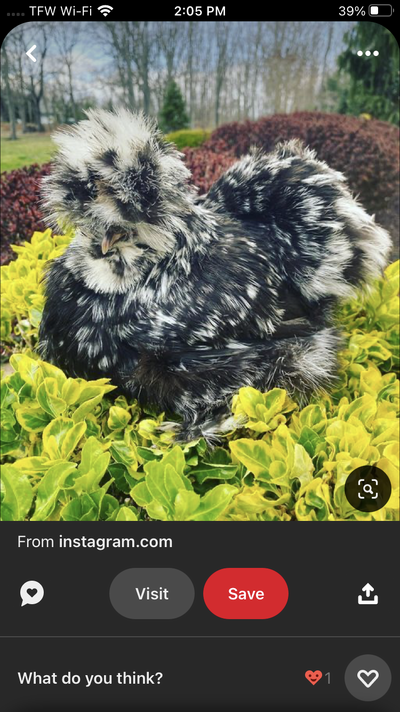Timbers Happy Hens
Songster
- Jun 2, 2023
- 241
- 241
- 111
So I’d really love to have some black, blue or chocolate mottled silkies. I don’t want to have eggs shipped and pay out the butt for them, I’d like to breed my own. I’m very understanding that it will take at least 3 generations or more to get the results I’m looking for. What I need to know is what colors are best to start with to get the mottling going.
I currently have a mille fluer Cochin hen, a few calico Cochin hens in dark and light reds, a black satin silkie hen, a grey silkie hen, a buff silkie hen, a chocolate silkie hen and 2 black silkie hens. I also have a paint silkie roo, black silkie roo and calico Cochin roo.
If there’s a color that I need for a better foundation, I have an npip breeder that I buy my silkies and Cochins from I can get ahold of. Please let me know your recommendations!
(Photos are from Pinterest so you can see what I’m shooting for, not my birds!!)
I currently have a mille fluer Cochin hen, a few calico Cochin hens in dark and light reds, a black satin silkie hen, a grey silkie hen, a buff silkie hen, a chocolate silkie hen and 2 black silkie hens. I also have a paint silkie roo, black silkie roo and calico Cochin roo.
If there’s a color that I need for a better foundation, I have an npip breeder that I buy my silkies and Cochins from I can get ahold of. Please let me know your recommendations!
(Photos are from Pinterest so you can see what I’m shooting for, not my birds!!)





